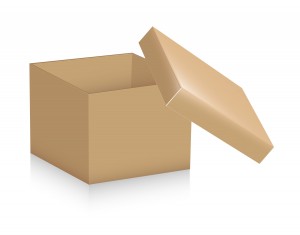 One of the things we specialize in at My Divine Concierge is helping people pack up their homes and move. As a result, we have become very familiar with different types of packing materials over the years. We go through our fair share of bubble wrap, packing peanuts, tissue paper and foam blocks. Each of these materials has a very specific purpose for which it is intended.
One of the things we specialize in at My Divine Concierge is helping people pack up their homes and move. As a result, we have become very familiar with different types of packing materials over the years. We go through our fair share of bubble wrap, packing peanuts, tissue paper and foam blocks. Each of these materials has a very specific purpose for which it is intended.
The point of using packing materials is to protect your valuable items from damage during transport. However, because each material has its own unique properties, no single one is appropriate for every need. It pays to know how each one works and what it is best used for. We will explain that here.
Before we get to the different packing materials, however, we need to talk about the two primary enemies of your valuables during a move:
Shock – Fragile items such as glass and porcelain often become the victims of shock during a move. In other words, you may attempt to protect an item with a ton of tissue paper only to have your efforts rendered useless when the moving truck hits a pothole. Shock waves introduced by that pothole send energy to everything inside the truck. Fragile items unable to withstand that energy can break.
Weight – Stacking heavier items on top of lighter items is a recipe for disaster. Weight is a big factor in any move, requiring effective packing to avoid damage by crushing.
Packing Peanuts
Packing peanuts are an excellent material for providing extra cushioning when placing fragile objects into larger boxes. The foam peanuts are intended to take up extra space and, to some degree, prevent the contents of the box from shifting. In this sense, the peanuts also act as a minimal shock absorber. As energy travels through the box, the peanuts absorb it. The one downside to packing peanuts is that they are not very crush resistant. They also may not work well in preventing heavier objects from shifting inside a box.
Bubble Wrap
Bubble wrap does not do a good job of filling up empty space or preventing the contents of a box from shifting, but it does a great job of preventing damage caused by shock. All of those tiny air bubbles absorb energy and dissipate it across the entire surface of the product, thereby preventing the energy from reaching whatever it is protecting. Two or three layers of bubble wrap can protect just about anything from shock energy.
Foam Blocks
Foam blocks offer the best properties of both packing peanuts and bubble wrap in a single material. You can use blocks to take up empty space and prevent contents from shifting. At the same time, foam is a great energy absorber that can protect against both shock and limited excess weight. Just be careful about the weight thing. Foam blocks can be compressed by excess weight and, as a result, lose their protective benefits.
Tissue Paper
The old-fashioned tissue paper we all love is pretty much useless in terms of shock absorption and space filler. That does not mean it has no purpose when moving. Tissue paper is an excellent choice to protect items from scratches and dents prior to wrapping them in bubble wrap or encasing them in packing peanuts. The softness of tissue paper protects most objects by adding a layer between the fragile object and one of the other packing materials.
Protecting your valuables is important when moving. At My Divine Concierge, we use a variety of packing materials along with moving blankets and good, old-fashioned common sense. We are committed to helping our clients pack and move with no damage to their personal possessions. We would be thrilled with the opportunity to assist you with your next move.
